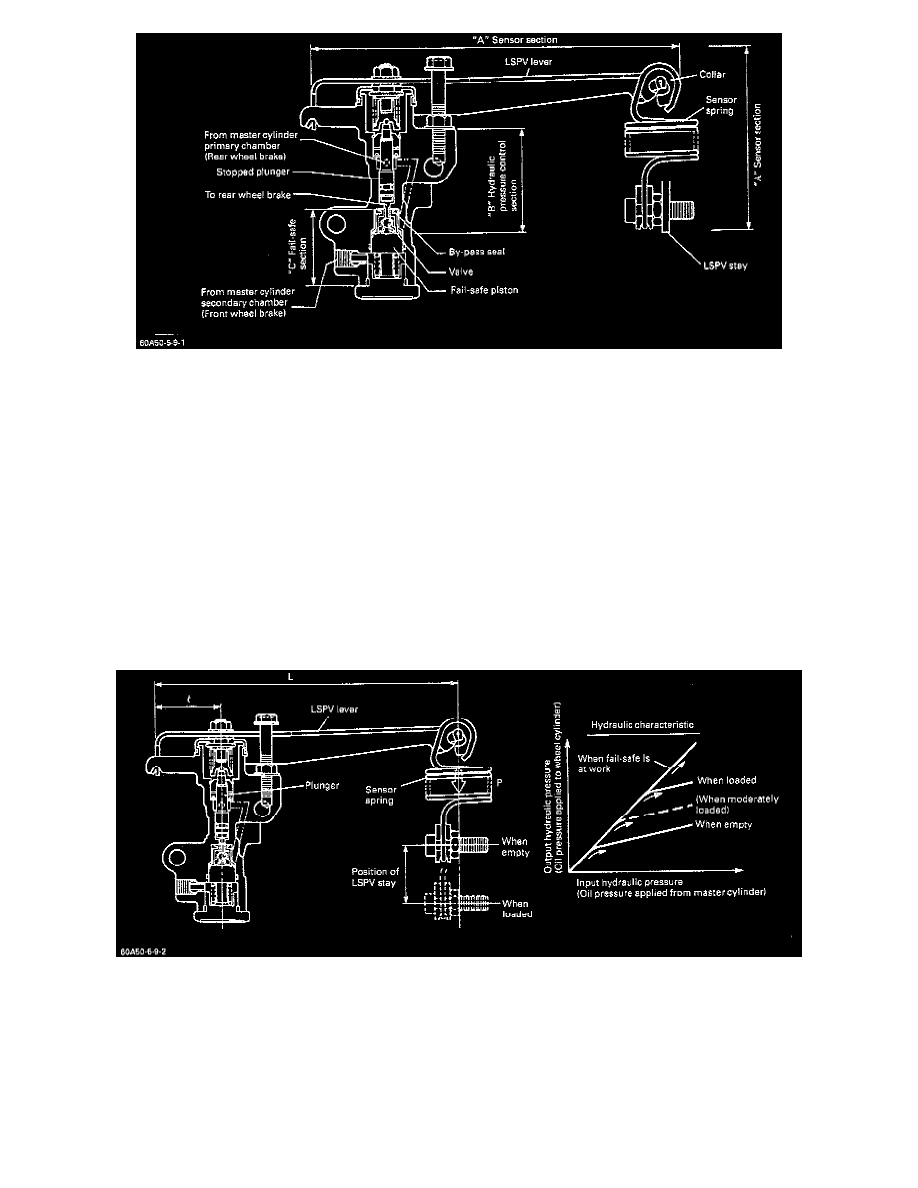Sidekick JS 2D 2WD L4-1.6L (1998)

OPERATION
LSPV is installed to the vehicle body, with the end of the lever at its top connected to the upper arm of the rear suspension by way of the sensor spring
and the LSPV stay.
When some load is placed on the vehicle, the distance between the axle housing of the rear suspension and the vehicle body (chassis) (i.e. coil spring
height) changes, whereby the sensor spring length also changes.
As the sensor spring length changes, the force affecting the plunger in LSPV by way of the lever changes so that the hydraulic characteristic suitable
for the load weight becomes available.
When empty
As the sensor spring is pulled by comparatively weak force, the force applied to the plunger is also small and the hydraulic characteristic takes a low
bend point as shown in the graph below.
When loaded
As the sensor spring is pulled by comparatively strong force, a larger force is applied to the plunger so that the hydraulic characteristic takes a higher
bend point in the graph below.
The relationship between the force applied to the plunger and the bend point in the hydraulic characteristic graph is described under 2 Operation of
hydraulic pressure control section.
1) Operation of sensor section. One end of the sensor spring is installed to the rear suspension upper arm and the other end is to the LSPV lever.
The spring power P is applied to the plunger by way of the lever. The force on the plunger then is expressed as F = L p
